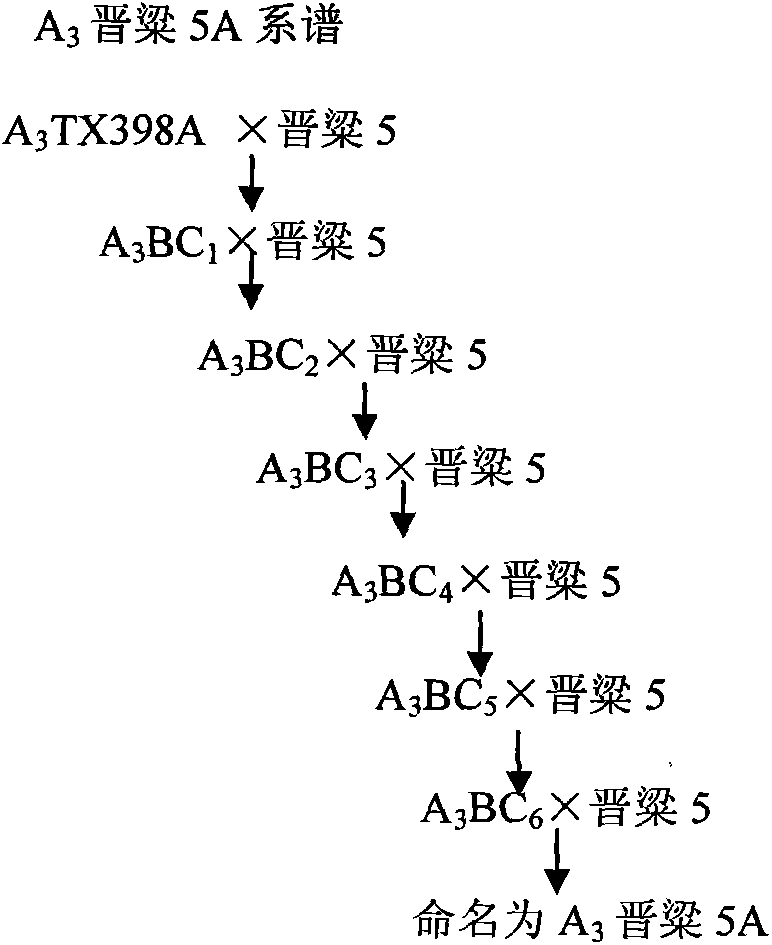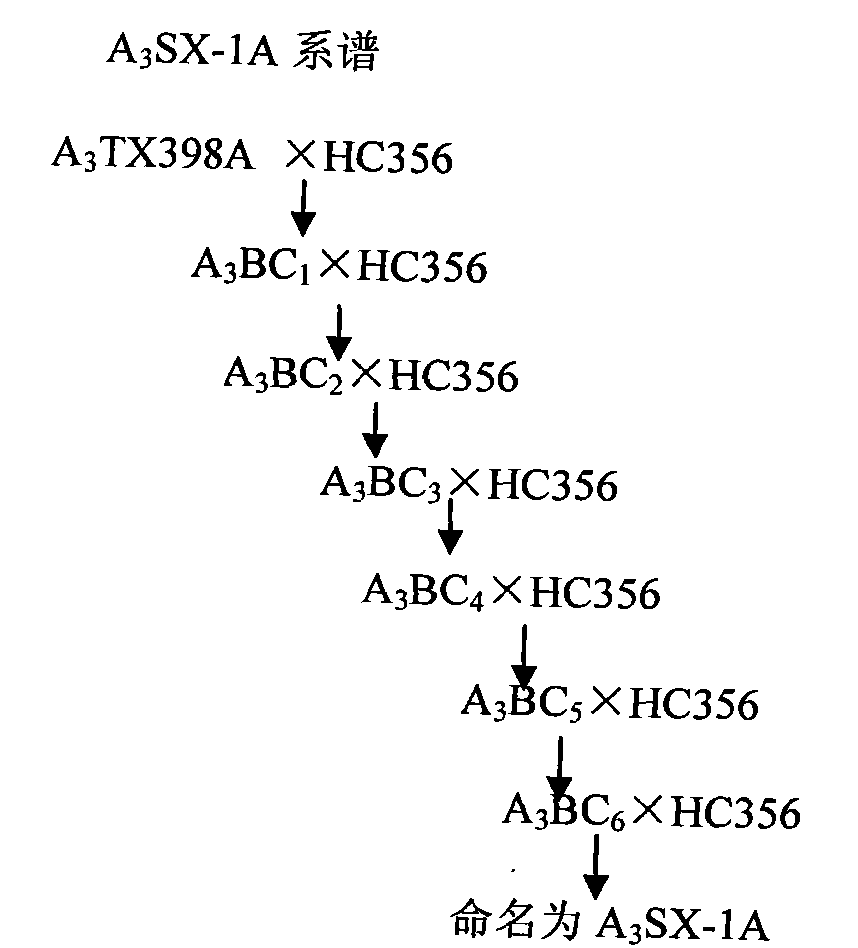Seed selection method of sorghum A3 cytoplasmic male sterile line
A male sterile line and cytoplasmic technology, applied in the field of breeding, can solve the problems of restricting sorghum seed production, increasing the cost of seed production, and abortion of florets, so as to solve the epidemic of sorghum cytoplasmic specialized infection and avoid sorghum cytoplasmic Prevalence of specialized infestation diseases, effects of increasing new types of forage
- Summary
- Abstract
- Description
- Claims
- Application Information
AI Technical Summary
Problems solved by technology
Method used
Image
Examples
Embodiment 1
[0021] refer to figure 2 , the breeding process of A3 Jinliang 5A, with A3TX398A as the female parent, A1, A2 restorer line Jinliang 5 as the backcross male parent group to form a backcross combination, planting F1, selecting from F1 and backcrossing male parent plant height, etc. A line with similar traits was used as the backcross female parent, and Jinliang 5 was used as the backcross male parent to carry out backcrossing to obtain one generation of backcross, and then Jinliang 5 was continuously backcrossed for 6 generations to obtain agronomic traits such as plant height and panicle shape A male sterile line consistent with Jinliang 5.
Embodiment 2
[0023] refer to image 3 , A 3 The breeding process of SX-1A, with A 3 TX398A was used as the female parent, and the A1 and A2 restorer line HC356 was used as the backcrossing male parent to form a backcrossing combination, and F1 was planted, and a line similar to the height traits of the backcrossing parent was selected from the F1 as the backcrossing female parent, and continued to use HC356 was backcrossed as the backcross male parent to obtain one generation of backcross, and then HC356 was used for 6 successive backcross generations to obtain a sterile line with the same agronomic traits as HC356, such as plant height and panicle shape.
Embodiment 3
[0025] refer to Figure 4 , A 3 The breeding process of SX14A, with A 3 TX398A was used as the female parent, SX14B was used as the backcrossing male parent to form a backcrossing combination, and F1 was planted, and a line similar to the height traits of the backcrossing parent was selected from the F1 as the backcrossing female parent, and SX14B was continued to be used as the backcrossing parent Backcrossing was carried out to obtain one generation of backcrossing, and then SX14B was continuously backcrossed for 6 generations to obtain a sterile line with the same agronomic traits as SX14B, such as plant height and panicle type.
PUM
 Login to View More
Login to View More Abstract
Description
Claims
Application Information
 Login to View More
Login to View More - Generate Ideas
- Intellectual Property
- Life Sciences
- Materials
- Tech Scout
- Unparalleled Data Quality
- Higher Quality Content
- 60% Fewer Hallucinations
Browse by: Latest US Patents, China's latest patents, Technical Efficacy Thesaurus, Application Domain, Technology Topic, Popular Technical Reports.
© 2025 PatSnap. All rights reserved.Legal|Privacy policy|Modern Slavery Act Transparency Statement|Sitemap|About US| Contact US: help@patsnap.com



